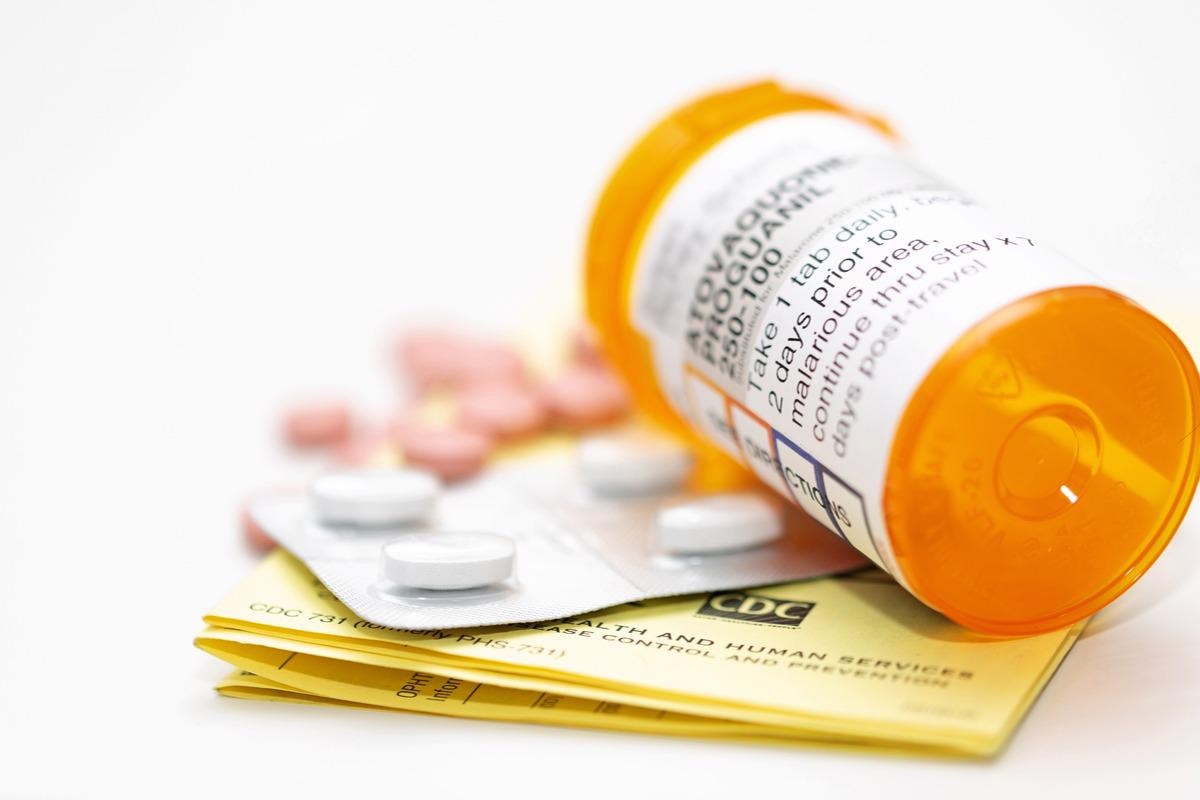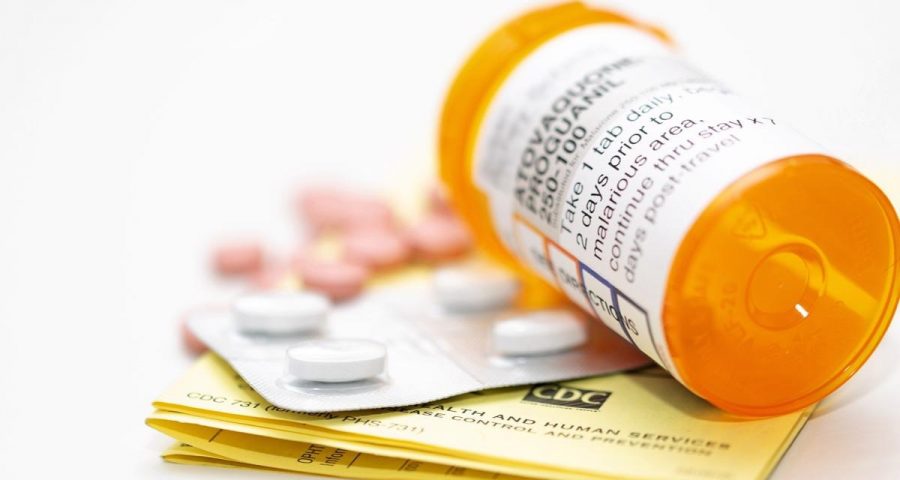In a recent study posted to the medRxiv* preprint server, researchers evaluated a drug, atovaquone, for coronavirus disease 2019 (COVID-19) treatment.

Therapeutic intervention during the early phase of COVID-19 in outpatient settings could alleviate severe outcomes and reduce the need for hospitalization and mortality. Numerous clinical trials have tested a host of antiviral drugs against severe acute respiratory syndrome coronavirus 2 (SARS-CoV-2). These include new and repurposed drugs targeting the vital proteins of SARS-CoV-2, such as papain-like protease, main protease, and ribonucleic acid (RNA) polymerase, among others.
A recent investigation screened various Food and Drugs Administration (FDA)-approved drugs and identified drugs with antiviral activity against SARS-CoV-2. The current study's authors selected one of the drugs, atovaquone, for clinical evaluation based on its pharmacokinetic (PK), virucidal, complication profiles, and global availability.
About the study
In the present study, researchers investigated the antiviral activity of atovaquone in patients hospitalized with COVID-19 in a prospective, double-blind, placebo-controlled, randomized clinical trial. The study was conducted at two sites in Dallas, and subjects were enrolled from June 22, 2020, to December 29, 2020. Participants were randomized in a 2:1 ratio for atovaquone or placebo administration. Besides, patients also received the standard of care therapies such as remdesivir, dexamethasone, and convalescent plasma therapy.
Eligible participants were 18 years or older and positive for SARS-CoV-2 confirmed by reverse-transcription polymerase chain reaction (RT-PCR). Saliva was collected from each patient every morning and evening before administering the trial drug (placebo or atovaquone). Plasma and serum samples were obtained on days 1 (baseline), 3, and 5 of hospitalization.
The primary outcome was to estimate the log-transformed viral load (expressed as copies per ml) using generalized linear mixed-effects models (GLMMs) for repeated measures. Secondary outcomes were viral load estimation on the second, fourth and seventh day after randomization, area under the curve (AUC) analysis of viral load through days 3 and 7 using the trapezoidal rule, assessing time required for two log unit decrease in viral load using Kaplan-Meier estimates.
Findings
Among the 60 randomized participants, 41 received atovaquone, and 19 received placeboes. The mean age of the subjects was 51 years, and they were predominantly male and Hispanic. The baseline viral load was 5.25 copies/ml in the treatment group and 4.79 copies/ml in the placebo group, and a decrease in viral load with time was evident in both groups.
After two days, the viral load was 5.37 copies/ml in atovaquone recipients and 4.43 copies/ml in the placebo group. At four days, the viral load was 4.22 copies/ml (atovaquone recipients) and 3.76 copies/ml (placebo). The viral load was 3.92 copies/ml in the atovaquone group and 3.71 copies/ml in the placebo arm seven days after the intervention.
In subgroup analyses evaluating the primary outcome stratified by sex, age, sampling time, diabetes status, remdesivir use, median baseline viral load, and time since symptom onset, the authors found no differences in viral load over time. Eight atovaquone recipients exhibited a >2-point change in ordinal score compared to one in the placebo group five days after the intervention. On day 15, 25 atovaquone recipients had a >2-point change in ordinal scale compared to nine placebo subjects.
Atovaquone levels were lower on day 3 (7.66 μg/ml) than on day 5 (11.59 μg/ml), implying that steady-state concentration was not attained by three days. The researchers observed an inverse correlation between atovaquone levels and body mass index (BMI) that was statistically significant. Interestingly, atovaquone levels and viral load were also inversely correlated.
Overall, 45 adverse events of grade 3 or higher were recorded; 30 were noted in the atovaquone group and 15 in the placebo group. Non-serious adverse events possibly due to study drugs were transaminitis, nausea, diarrhea, and hyponatremia. Eight deaths were recorded 28 days after the intervention; six were in the atovaquone arm, and two were among placebo subjects.
Conclusions
The researchers observed no significant viral clearance in those treated with atovaquone compared to placebo, although it was well tolerated in hospitalized COVID-19 patients. The authors report that the preclinical study which identified atovaquone did not evaluate its in vivo antiviral activity in animal models. Hence, the in vitro findings from cell cultures might not directly translate clinically.
Further, since two-thirds of study participants received remdesivir, the antiviral effect of atovaquone might have been dwarfed by remdesivir. The one-third of subjects that did not receive remdesivir could not be evaluated for antiviral activity of atovaquone, given the small sample size. Nonetheless, more PK-guided studies are warranted to ascertain the role of atovaquone in treating COVID-19 patients.
*Important notice
medRxiv publishes preliminary scientific reports that are not peer-reviewed and, therefore, should not be regarded as conclusive, guide clinical practice/health-related behavior, or treated as established information.
- Jain MK, Lemos JA de, McGuire DK, et al. (2022). Atovaquone for Treatment of COVID-19: A Prospective Randomized, Double-Blind, Placebo-Controlled Clinical Trial. medRxiv. doi:10.1101/2022.05.24.22275411 https://www.medrxiv.org/content/10.1101/2022.05.24.22275411v1
Posted in: Medical Science News | Medical Research News | Disease/Infection News | Healthcare News
Tags: Body Mass Index, Cell, Clinical Trial, Convalescent Plasma, Coronavirus, Coronavirus Disease COVID-19, covid-19, Dexamethasone, Diabetes, Diarrhea, Drugs, Food, Hyponatremia, in vitro, in vivo, Mortality, Nausea, Placebo, Polymerase, Polymerase Chain Reaction, Preclinical, Remdesivir, Respiratory, Ribonucleic Acid, RNA, SARS, SARS-CoV-2, Severe Acute Respiratory, Severe Acute Respiratory Syndrome, Syndrome, Transcription

Written by
Tarun Sai Lomte
Tarun is a writer based in Hyderabad, India. He has a Master’s degree in Biotechnology from the University of Hyderabad and is enthusiastic about scientific research. He enjoys reading research papers and literature reviews and is passionate about writing.
Source: Read Full Article
